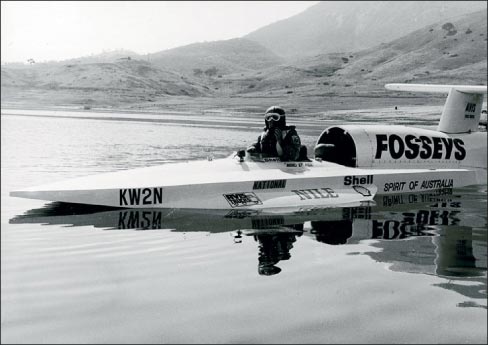You Think That’s Fast?
A Short History of Speedboat Racing
 |
|
The Spirit of Australia: a surprise from Down Under. |
As with cars, there is a long history of boat racers, financiers, and national rivalries surrounding the water speed record, going back to the early 1900s.
The race to be the “world’s fastest” on the water intensified in the 1920s and ‘30s when Lord Wakefield, the Chairman of Britain’s Castrol Oil company, set out to take the prize from the famed American racer Gar Wood and his Miss America boat. On June 13, 1930 they succeeded: Miss England II piloted by Sir Henry Seagrave hit a speed of 98.76 miles per hour (mph).
The title would go back and forth between America and England over the next decade. Two British racers died before Gar Wood took the title back to the U.S. when his new Miss America X hit 124.86 mph powered by four supercharged Packard airplane engines.
The Brits and Americans would drastically improve boat engine technology and hull design over the next 50 years in the constant race to be the fastest. No other country put up a challenge to their water speed record supremacy… until 1977.
On November 20, 1977 a previously unknown Australian, Ken Warby, beat the world record by about 2 mph at 288.6 mph using a boat he’d built in his backyard without sponsors (the Spirit of Australia). After breaking the world record, Warby soon found the sponsor funding necessary to improve his boat’s design even further and shatter his own world record a year later at an incredible 317 mph. Whoa!
Warby’s record has stood for an astonishing 34 years, despite many attempts to beat it. Dozens of racers have died trying. In fact, the race to beat the world water speed record is considered to be perhaps the most hazardous in the professional sporting world, with an approximate fatality rate of 85 percent for all racers since 1940.
Moral of the story: don’t marry a boat racer unless you’re prepared for some serious heart break.